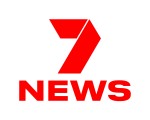Tell us about your journey into the role of chief sub-editor of The West Australian.
I’m from England and I started as a trainee reporter on the Lancashire Evening Telegraph in 1997. It was a bold tabloid newspaper where most stories were a maximum 250 words – including a quote! I learnt to write short, punchy stories, covering courts, crime, council and human interest. From 8am to 10am each day we were on deadline, so in that time I’d write at least two main stories plus four shorter ones, and read them in the paper that afternoon. I was always pushing for internal promotions, so I covered several beats in three years. I joined the Coventry Evening Telegraph as a reporter, stepping up to manage reporters and rewrite copy. I became a features writer, winning a national racial equality award for coverage of asylum seekers. I then became a sub-editor, learning to write snappy headlines and design pages. I spent six months backpacking and labouring in Australia with my brother in 2004. Returning to England, I became a sports sub-editor on The News of the World and The Sun, where writing great headlines is an art. While in London, I fell in love with a teacher from Australia. We married, and moved to Perth in 2010 where I joined The West as a sub-editor. I became assistant sports editor in 2013 and chief sub in 2019.
What does a typical day in your role look like?
Every day is different but the aim is the same – to make our 20-odd newspapers, our magazines and our websites as lively and accurate as they can be, in the time we have. I wake early and get across the news, reading our papers’ digital editions if I didn’t already see them. I place trust in my team of 25 sub-editors who work various shifts covering 8am to 10pm, working to multiple deadlines. We edit stories for online first, then we draw print pages, and finally we edit those stories and their headlines in print. I get to the office about 9 or 10am, when production is well under way. My team edit and approve stories and pages, but I like to see all our front pages before they go, up to 12 of them a day. We use Microsoft Teams to bounce ideas off each other. My team check controversial stories or headlines with me, and I keep a close eye on The West’s letters and obituaries pages. I work wherever the team needs me most –drawing pages, subbing in online or print, or revving up headlines. Whether I’m rewriting a controversial front-page story or tidying the local golf results, it’s all part of the mix that our readers expect. By 6pm we have hit most of our deadlines, so I’m keen to go home and see the family again. I trust my team to handle the remaining 7pm and 10pm deadlines on The West. Sometimes I’ll log on after hours to get ahead or do rosters, but I aim for a good work-life balance.
What is one of the biggest news stories you’ve covered in the past year or so that has captivated readers?
The Queen’s obituary in The West was a huge task – a 32-page special we’d been working on for more than two years. When she died it still took an intense 24 hours of editing, fact-checking and proofreading to bring it to the high standard that our readers demand. But I take just as much pride in the smaller stories we cover daily in country towns because they matter to readers. We create up to 10 attention-grabbing front pages each day for our regional papers from Broome all the way down to Albany. The big stories are often easy to handle, but I love the challenge of telling the offbeat stories and explaining local council proceedings in a way that grabs readers’ attention. We’re lucky to have the Kalgoorlie Miner, turning local news into a front-page story six days a week. And we work with some great writers on The West and The Sunday Times magazines, lifestyle, travel and motoring sections. Another thing my team took pride in was proofreading information panels for The West’s 190th anniversary exhibition which is now running at WA Museum Boola Bardip until January 28.
Who or what inspires you most?
I’m inspired because good journalism makes the world a better place. The stories our reporters break set the daily news agenda for most other media outlets. We expose what’s going on, and authorities are forced to fix it. That applies to the big stories and the smaller ones. Our editor-in-chief Anthony De Ceglie has boundless energy which we all feed off. But the most important person at any newspaper isn’t the editor – it’s the reader.
If you could give young journalists some advice, what would it be?
Read your own work before and after it’s edited, so your writing grows. Be a news junkie and read your competitors. And tell your stories shortly and clearly, just as you’d tell them in the pub or in the street. Don’t use ten words where three will do.








